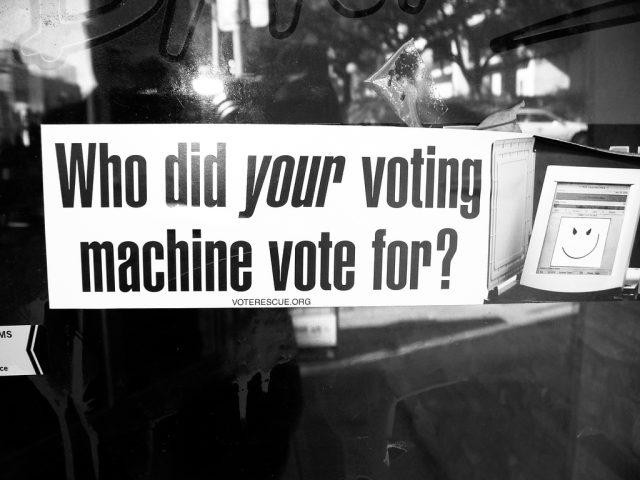
A handful of jurisdictions nationwide reported various computer-related problems that hampered some voters as Americans went to the polls on Tuesday.
As Ars has noted over the last two years, electronic voting (much less Internet voting) is on the decline in the United States as voters and voting officials have placed less and less confidence in machines that were designed to replace confusing paper ballots in the controversial 2000 presidential election and the resulting Help America Vote Act.
On Tuesday, the problems included 11 voting machines in Virginia Beach and Newport News, Virginia that were “knocked out of calibration.” In a statement, the Virginia Department of Elections said that some AccuVote TSX Touch Screen voting machines changed votes to something other than what the voter intended.
“Localities have indicated that voting machines exhibiting any issues are immediately taken out of service until they can be checked by a technician,” the agency said. “Both localities have sufficient voting machines at each precinct for voting to continue without delay. Touch screen voting machine voters have an opportunity to review their selections and make final edits on a summary screen before their ballot is cast. If a machine does not reflect the voter’s choice, the voter should notify an officer of election prior to casting their ballot.”
Another issue that cropped up was that the wrong digital voter rolls were loaded onto thumb drives in North Carolina. In Michigan, there was a similar problem that resulted in some voters being turned away: the mayor of Norton Shores was told that he had already voted by absentee, which he hadn’t. In Indiana, several polling locations were shut down as some computers would not boot entirely.
One of the most serious drew the attention of the Connecticut Governor Dan Malloy, who petitioned a state court to extend voting hours by an hour due to an “unspecified glitch” on voting computers.
Officials in those locales did not respond to Ars' request for further comment.
Look East, young man
While computer-based voting in the United States is flawed, there is a bright spot in Europe.
Estonia, the tiny, post-Soviet country in the northeastern corner of Europe that reclaimed its independence in 1991, has held Internet-based elections for nearly a decade. The country started issuing digital ID cards that look very similar in size to other European Union ID cards or American driver's licenses and feature a front-facing chip that can be read by a small handheld device.
With that infrastructure in place, the Estonian government began testing Internet-based voting in local elections in 2005. Two years later, it expanded to national elections. In the 2009 elections for the European Parliament, 15 percent of all votes cast were submitted online. That number grew to almost 25 percent for the 2011 domestic parliamentary elections and topped 31 percent during the European Parliament elections in 2014.
One of the biggest criticisms of the Estonian online voting process was that it was not open source: that changed last year, when the country put the source code on GitHub.
In the meantime, for what it's worth, America does seem to excel at expletive-laden polling place location websites.
reader comments
82